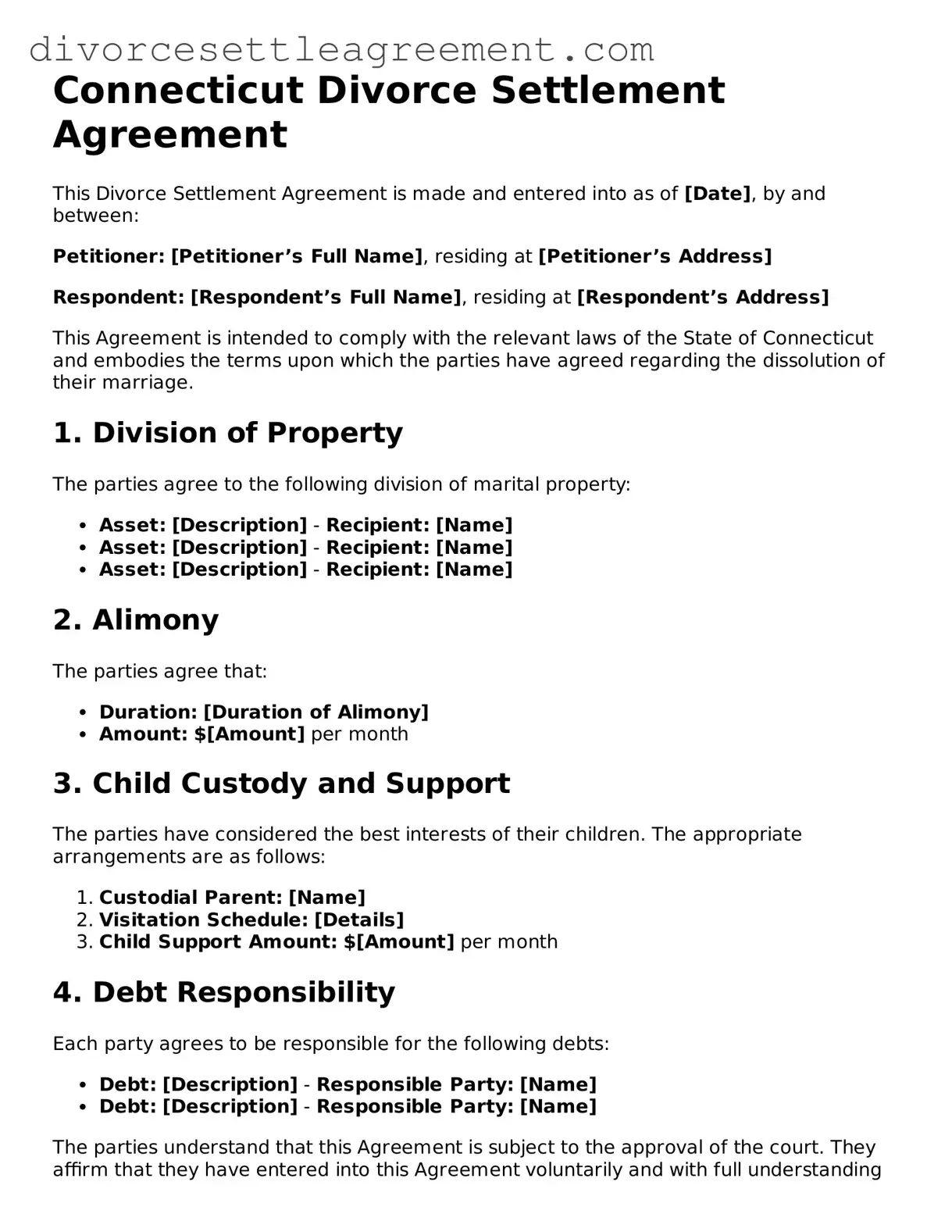What is a Divorce Settlement Agreement in Connecticut?
A Divorce Settlement Agreement is a legal document that outlines the terms of a divorce between two parties. It typically covers issues such as property division, child custody, visitation rights, and spousal support. This agreement helps ensure that both parties are on the same page regarding their responsibilities and rights after the divorce is finalized.
Who needs to complete a Divorce Settlement Agreement?
Both spouses must complete a Divorce Settlement Agreement if they are getting divorced in Connecticut and have agreed on the terms of their separation. This document is essential for couples who want to resolve their issues amicably without going to court.
What should be included in a Divorce Settlement Agreement?
The agreement should include detailed information about the division of assets and debts, child custody arrangements, child support obligations, and spousal support terms. It may also address other matters such as health insurance and tax considerations. Clarity in these areas helps prevent future disputes.
How is a Divorce Settlement Agreement filed?
Once both parties have agreed on the terms, the Divorce Settlement Agreement must be filed with the Connecticut Superior Court. It is typically submitted along with other divorce-related documents. Both parties must sign the agreement, and it may require notarization.
Can a Divorce Settlement Agreement be modified?
Yes, a Divorce Settlement Agreement can be modified after it is finalized, but only under certain circumstances. Changes in financial situations, relocation, or changes in the needs of children may warrant a modification. A court must approve any changes to ensure they are fair and reasonable.
What happens if one party does not comply with the agreement?
If one party fails to comply with the terms of the Divorce Settlement Agreement, the other party can file a motion with the court to enforce the agreement. The court may hold the non-compliant party in contempt, which could result in penalties, including fines or changes to custody arrangements.
Is legal representation necessary for creating a Divorce Settlement Agreement?
While it is not legally required to have an attorney, it is highly recommended. An attorney can help ensure that the agreement is fair, legally binding, and compliant with Connecticut law. They can also provide guidance on complex issues that may arise during the divorce process.
How long does it take to finalize a Divorce Settlement Agreement?
The time it takes to finalize a Divorce Settlement Agreement varies based on the complexity of the issues involved and the willingness of both parties to negotiate. If both parties agree on the terms, it may take a few weeks to a couple of months to finalize the divorce. If disputes arise, the process could take longer.
Can a Divorce Settlement Agreement be used in court?
Yes, a Divorce Settlement Agreement can be used in court if disputes arise in the future. The court may refer to the agreement to determine the rights and responsibilities of each party. It serves as a record of what both parties agreed upon during the divorce process.
Where can I find a Divorce Settlement Agreement form in Connecticut?
Divorce Settlement Agreement forms can be obtained from the Connecticut Judicial Branch website or local courthouse. Many legal aid organizations also provide templates and resources to help individuals create their agreements. It is essential to ensure that any form used complies with Connecticut laws.
